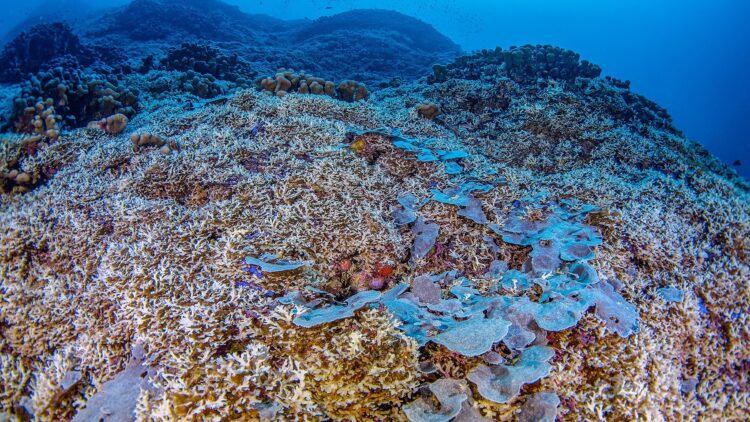In a significant find, scientists have unearthed the largest known coral colony in the world. The discovery of this colossal organism, which has been alive since the era of Napoleon Bonaparte, provides crucial insights into coral resilience and marine conservation. What’s more, this underwater living creature also emphasizes the urgent need for action to protect these vital marine ecosystems.
Solomon Islands’ coral colony: A 300-year-old marine marvel amid conservation challenges
Situated off the coast of the Solomon Islands in the Southern Pacific, this coral colony—identified as Pavona clavus—spans an impressive 34 meters (112 feet) in width, 32 meters (105 feet) in length, and stands at a height of 5.5 meters (18 feet), surpassing the previous record holder in American Samoa by 12 meters (30 feet).
During a National Geographic Pristine Seas expedition led by videographer Manu San Félix, the team unexpectedly encountered this underwater wonder while exploring the site of a suspected shipwreck. They were taken aback by the discovery, which underscores the vast unexplored regions of our oceans.
“It is impressive to see something so big and so old—around 300 years old—bouncing back through such significant changes in the environment,” San Félix remarked at the time.
Unlike other coral reefs that consist of various genotypically distinct colonies, this giant coral functions as a single organism composed of millions of polyps working in unison. Its impressive longevity and size exemplify the ability of coral to adapt and survive, providing a beacon of hope amid the global reef crisis.
This mega coral is a testament to pure resilience
While this finding is remarkable, the overall outlook for coral reefs around the world remains bleak due to climate change. Increasing ocean temperatures have led to extensive coral bleaching, threatening the survival of numerous species.
The Solomon Islands, much like other regions, face deterioration of their shallow reefs due to warming waters and pollution. Nevertheless, the resilience of this newly identified coral colony—which thrives in cooler, deeper waters—may offer valuable lessons for scientists working to safeguard endangered reefs and boost their recovery.
As such, the insights gained from studying this coral are pivotal for developing conservation solutions. With estimates indicating that 44% of all hard coral species are at risk of extinction, understanding how this super-organism has adapted to survive may guide efforts to protect other coral ecosystems.
Vital insights can be gained from this coral colony to conserve our marine ecosystems
In light of this monumental discovery, local tribes in the Solomon Islands have initiated petitions for the government to formally protect the waters surrounding the Malaulalo area.
Climate Minister Trevor Manemahaga has since stressed the important role that coral reefs play in the nation’s economy and ecology, promoting sustainable practices to reduce the impact of activities that threaten coral habitats, such as logging. Evidently, this push for conservation reflects a growing awareness of the necessity to preserve marine ecosystems amid climate change challenges.
In an international context, this discovery signifies the broader relevance of coral reefs in fostering biodiversity, protecting coastlines, and sustaining millions of lives. Urgent funding and collaborative efforts are needed for conservation and adaptation strategies to combat the effects of climate change. The mega coral of the Solomon Islands serves as a symbol of hope for the future of marine ecosystems, illustrating the importance of proactive measures to ensure their survival.
As researchers focus on marine conservation, this colossal coral colony serves as a powerful reminder to protect our oceans. It showcases Mother Nature’s resilience and successful conservation potential. Together, we can take action by preserving these precious ecosystems for future generations.

